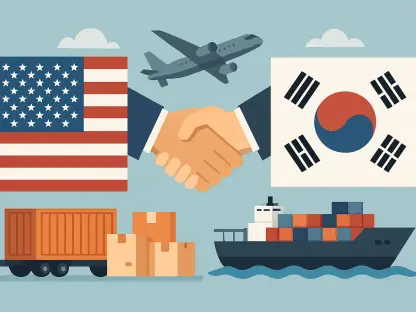As we dive into the complexities of the U.S. Postal Service’s latest strategies, I’m thrilled to speak with Rohit Laila, a veteran in the logistics industry with decades of expertise in supply chain and delivery systems. Rohit’s passion for innovation and technology in this sector makes him the perfect person to help us understand the upcoming USPS rate hikes set for January 2026, the financial challenges driving these changes, and how they fit into the broader shipping landscape. Today, we’ll explore the reasons behind the price increases, their impact on different customer groups, and what this means for the future of postal services.
Can you walk us through the main reasons the U.S. Postal Service is planning to raise shipping rates in January 2026?
Absolutely, Alexandre. The USPS has been grappling with significant financial difficulties for years, and the decision to raise rates starting January 18, 2026, is largely a response to those challenges. The agency is dealing with a massive net loss—$9 billion in fiscal year 2025 alone—and declining mail volume is a big part of that. On top of this, they have a mandated cost structure that’s tough to maneuver around. These rate hikes are essentially a way to generate much-needed revenue to offset those losses and keep the organization afloat while they work on other strategies to improve their financial health.
What specific financial hurdles are pushing the USPS to make this move, and how do they expect it to help?
The financial hurdles are multifaceted. Beyond the drop in mail volume, which cuts directly into their revenue, there are rising operating expenses, even if they’ve seen a small uptick of 1.2% in operating revenue. Things like voluntary early retirement buyouts and other fixed costs add to the burden, though they’ve managed to trim some expenses like transportation costs. The expectation with these rate hikes is to bring in more income—especially from shipping services like Ground Advantage, which has shown promise. The USPS hopes this will stabilize their bottom line and give them room to address structural issues without relying solely on cost-cutting.
Could you break down the specific rate increases for services like Ground Advantage and Priority Mail, and explain why some are higher than others?
Sure, let’s look at the numbers. For Ground Advantage, the average increase is 7.8%, which is higher than others like Priority Mail at 6.6%, Parcel Select at 6%, and Priority Mail Express at 5.1%. The variation often comes down to market positioning and demand. Ground Advantage, for instance, is a key service for shorter-distance, cost-effective shipping, and the USPS is banking on its growth potential. A higher increase there might reflect an effort to maximize revenue from a service that’s performing well, while keeping other premium services like Priority Mail Express more competitively priced to retain customers who prioritize speed.
How do the differences between retail and commercial rate hikes, such as 5.9% versus 9.6% for Ground Advantage, affect various customer groups?
The split between retail and commercial rates is significant because it impacts who bears the brunt of the increase. For Ground Advantage, a retail customer—think small businesses or individuals—faces a 5.9% hike, while commercial shippers, often larger entities with higher volume, see a steeper 9.6% jump. This approach can be a double-edged sword. It might encourage smaller shippers to stick with USPS due to relatively lower increases, but it risks alienating bigger clients who might turn to competitors if the cost difference becomes too stark. It’s a balancing act to maintain a diverse customer base while pushing for revenue.
How do these USPS rate hikes stack up against competitors like FedEx and UPS, and what does that say about their strategy?
Compared to FedEx and UPS, the USPS hikes are notable, especially in some categories where they outpace the base rate increases of those private carriers. For instance, the 7.8% average for Ground Advantage is often higher than what we’ve seen announced by competitors for similar ground services. This suggests USPS is willing to take a bolder stance on pricing to address their financial woes quickly. Their strategy seems to hinge on leveraging their unique position—especially for last-mile delivery and shorter distances—where they can still offer value even at higher rates, betting that customers won’t easily shift to competitors for certain services.
I’ve heard the rate hikes might attract heavier shipments over shorter distances, especially for Ground Advantage. Can you explain how that works?
Yes, this is an interesting angle. For Ground Advantage, the rate structure shows a much bigger increase—12.2%—for packages under one pound, compared to just 4.4% for heavier shipments between 8 and 20 pounds. What this does is make it relatively more cost-effective to ship heavier items over shorter distances with USPS. It’s a smart play to capture more of that market segment, like e-commerce businesses sending bulkier goods locally, where the cost per pound becomes more attractive. It benefits USPS by filling their network with higher-revenue shipments and offers customers a better deal on heavier loads.
With a reported net loss of $9 billion in fiscal year 2025, what do you see as the root causes of these ongoing financial struggles for USPS?
The $9 billion loss is a stark figure, and declining mail volume is a huge driver—first-class mail, for instance, just isn’t what it used to be as digital communication takes over. But that’s not the whole story. There are structural costs, like pension obligations and a universal service mandate, that lock them into expenses they can’t easily shed. Add to that operational inefficiencies and the need to maintain a vast network, and you’ve got a recipe for persistent losses. Even with a slight revenue bump, these underlying issues keep dragging them down unless addressed holistically.
Beyond rate hikes, what other steps is the USPS taking to tackle these financial challenges?
Under the current leadership, the USPS is looking at a range of solutions. They’re aggressively managing controllable costs—think optimizing transportation routes or reducing overhead where possible. There’s also a push to innovate, like expanding last-mile delivery partnerships and enhancing services like Ground Advantage to capture more market share. Additionally, they’re exploring operational reforms, such as streamlining processing facilities, to cut expenses. Rate hikes are just one piece of a broader puzzle to turn things around, but they need to pair these with long-term strategic shifts to really make a dent in the losses.
What is your forecast for the future of USPS shipping services in light of these changes and the broader industry trends?
Looking ahead, I think USPS has a challenging but potentially promising path. These rate hikes show they’re serious about revenue generation, and if they can keep growing services like Ground Advantage—especially for heavier, shorter-distance shipments—they could carve out a stronger niche against private carriers. However, the broader trend of declining traditional mail and rising e-commerce competition means they’ll need to keep innovating, whether through technology or partnerships, to stay relevant. I’d expect more focus on efficiency and possibly even legislative support to address structural costs. If they balance pricing with value, they can remain a key player, but it’s going to take sustained effort over the next few years.









